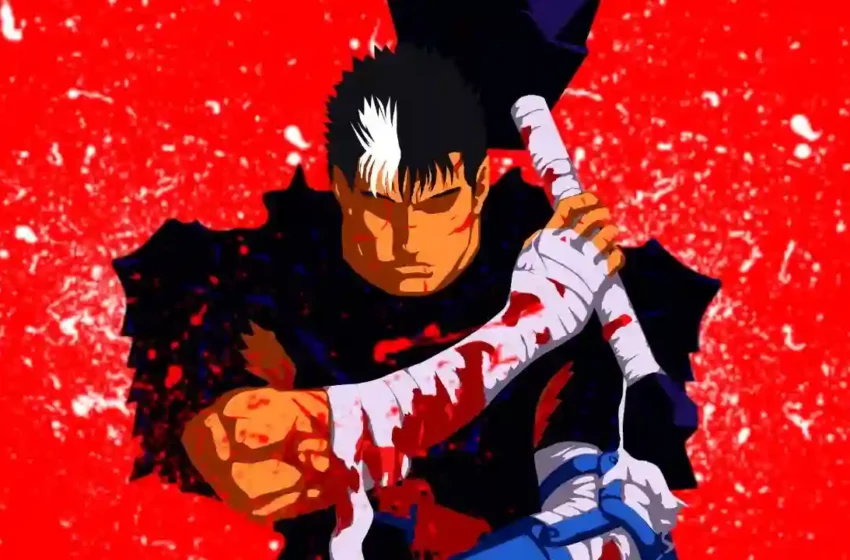Berserk’s Enduring Legacy: Shaping Contemporary Dark Fantasy

In the realm of dark fantasy, few works have left as indelible a mark as Kentaro Miura’s Berserk. Since its debut in 1989, the manga has not only garnered a dedicated global fanbase but has also played a pivotal role in shaping the landscape of contemporary dark fantasy. In this article, we explore the profound influence of Berserk on the genre, examining how its themes, characters, and storytelling innovations have reverberated through the years.
Breaking the Mold: Deconstructing Fantasy Tropes
Berserk is renowned for its bold departure from traditional fantasy tropes. While the genre often explores themes of heroism, magic, and epic battles between good and evil, Miura’s magnum opus takes a darker, more nuanced approach. Berserk deconstructs the conventional narrative structures, presenting a world where morality is not black and white, and heroes are burdened with flaws and trauma.
This departure from the norm has influenced contemporary dark fantasy creators to embrace ambiguity, challenge traditional hero archetypes, and explore the psychological toll of living in fantastical worlds. Berserk’s impact is evident in the emergence of narratives that blur the lines between good and evil, emphasizing the complexity of characters and the moral gray areas they navigate.
Complex Characters: Beyond Stereotypes
Berserk’s characters are a testament to Miura’s storytelling prowess. Protagonist Guts, with his traumatic past and relentless pursuit of revenge, defies the traditional hero mold. Similarly, Griffith’s transformation from charismatic leader to the dark entity Femto challenges the notion of villainy, inviting readers to empathize with characters who exist in the murky realms of moral ambiguity.
Contemporary dark fantasy works have embraced this complexity, creating characters with intricate motivations and shades of gray. The influence of Berserk is evident in narratives where protagonists grapple with their inner demons, and antagonists possess tragic backstories that blur the lines between hero and villain. The character-driven storytelling of Berserk has become a benchmark for the genre, inspiring creators to explore the depths of their characters’ psyches.
Mature Themes and Philosophical Depth
Berserk is unapologetically mature in its exploration of themes such as trauma, existentialism, and the consequences of unchecked ambition. Miura’s willingness to confront uncomfortable topics has paved the way for contemporary dark fantasy creators to delve into the philosophical depths of their narratives.
Modern dark fantasy works often tackle mature themes with a level of nuance and depth that echoes Berserk’s approach. The series’ exploration of the human condition, the corrupting influence of power, and the existential struggles of its characters has set a precedent for narratives that challenge readers to contemplate the darker aspects of the human experience.
Visceral Artistry and Atmosphere
Miura’s detailed and visceral artistry is a defining element of Berserk’s visual identity. The series’ dark and immersive atmosphere, coupled with its haunting landscapes and grotesque depictions of supernatural horrors, has set a standard for the visual language of dark fantasy.
Contemporary dark fantasy creators pay homage to Berserk’s visual legacy by incorporating similarly atmospheric and detailed artwork into their works. The influence of Berserk can be seen in the meticulous world-building, eerie aesthetics, and visceral depictions of the supernatural that characterize many modern dark fantasy creations.
Narrative Innovation: Pioneering Storytelling Techniques
Berserk’s narrative structure, with its intricate flashbacks and non-linear storytelling, has been groundbreaking for the genre. Miura’s ability to weave a complex and interconnected narrative has inspired contemporary dark fantasy creators to experiment with unconventional storytelling techniques.
Works influenced by Berserk often feature intricate plotlines, layered flashbacks, and a non-linear progression that challenges readers to piece together the overarching narrative. This narrative innovation has become a hallmark of contemporary dark fantasy, as creators strive to capture the same level of depth and complexity that defines Berserk.
Cultural Impact and Homage
Berserk’s cultural impact is evident not only in the direct influence on new works but also in the numerous homages and references found across various media. From video games to anime, many creators pay tribute to Berserk, acknowledging its significance in the dark fantasy genre.
Contemporary dark fantasy enthusiasts often discover Berserk through these references, sparking a renewed interest in the series. The homage paid by creators is a testament to the enduring legacy of Berserk and its continued relevance in shaping the creative landscape of dark fantasy.
Conclusion:
Berserk’s influence on contemporary dark fantasy is both profound and enduring. From its deconstruction of fantasy tropes to its complex characters and mature themes, the series has set a standard that resonates with creators and audiences alike. The visual and narrative legacy of Berserk can be seen in the atmosphere, storytelling techniques, and philosophical depth of modern dark fantasy works.
As the genre continues to evolve, the impact of Berserk remains a guiding force, inspiring creators to push the boundaries of storytelling and explore the darkest corners of the human psyche. Kentaro Miura’s magnum opus has not only left an indelible mark on the pages of manga but has also carved a lasting niche in the broader landscape of contemporary dark fantasy, ensuring its place as a cornerstone of the genre for years to come.


